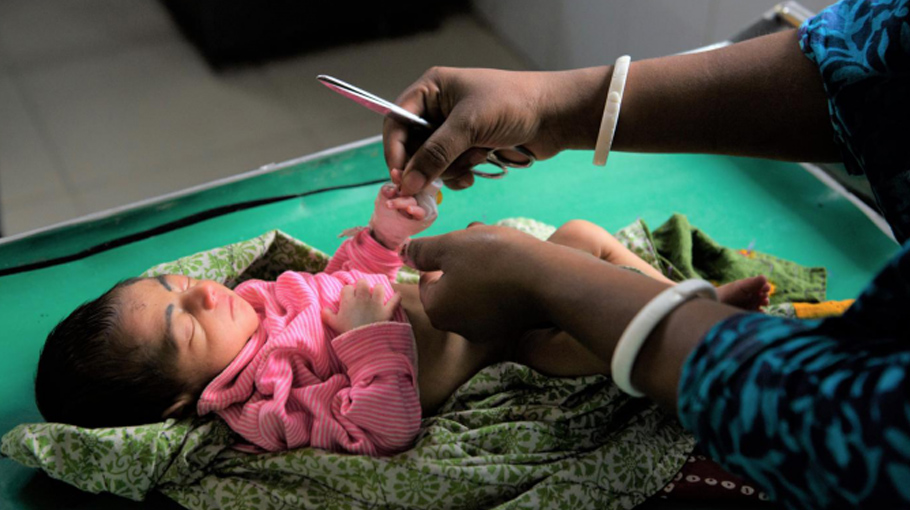Reducing newborn deaths
Bangladesh makes significant progress

Bangladesh has successfully reduced its newborn mortality rate from 64.2 deaths per 1,000 live births in 1990 to just 18 per 1,000 today. That translated to one death in every 50 births.
Such success, of course, came as the government continues to focus on reducing both newborn and maternal mortality rates which was way too high during the late 1990s and early 2000.
The country’s neonatal mortality rate (NMR) declined by 5 percent per year, from 42 deaths per 1,000 live births in 2000 to 18 today — the fastest in South Asia.
The outstanding achievements have been largely masterminded by the present government under the leadership of the Prime Minister Sheikh Hasina. The government gave special emphasis on safe deliveries and newborn care after deliveries made available in the rural areas.
The role of over 13,000 community clinics at union level also played a key role where doctors once a week offer critical advice to people who require healthcare advise.
The United Nations Children's Fund (UNICEF) has already recognized Bangladesh's outstanding success in reducing child mortality rate as Prime Minister Sheikh Hasina received MDG Award-2010 for the country's remarkable achievement in attaining the Millennium Development Goals (MDGs), particularly in reducing child mortality.
The key to such success is no doubt works of the health and family welfare departments. Health and family planning workers have huge contributions in safe deliveries and plan childbirth.
“ZennatAra Begum, a family planning assistant of Boalmari in Faridpur district, said, “We hold courtyard meetings among to-be-mothers and newly wedded wives to deliver messages on safe deliveries and precautions on childbirth, especially advocating for taking the advantages of hospital services during childbirth for risky deliveries. We also refer previously identified risky deliveries to proper hospital care so that the delivery of the newborn is safe.”
Institutional deliveries or deliveries taking place in hospitals significantly contributed to such reduction in NMR. “We raised awareness and emphasized on hospital deliveries instead of home deliveries which has huge risks of death of both mother and the newborn,” said Sultana Akhtar, a child health specialist in Gaibandha.
Health and family planning female workers across the country made efforts to break the ice of the culture of home deliveries. Traditionally, there was this belief that woman should not expose herself to a male doctor in a hospital. Such belief was widely supported by husbands and mother-in-law denying hospital services.
In the early 1990s over 90 percent of the childbirth took place at home in the hands of untrained birth assistants or dye as they were commonly known. Usually, such home deliveries lacked infection control while they also lacked medical support to deal with common emergencies like asphyxia.
The most common cause of newborn deaths in pre-1990s was asphyxia — which is essentially a lack of oxygen brought on by obstructed labour. "When the labour is very prolonged and the woman is struggling alone at home there is often fetal distress,” said DrShanta Islam practicing in a government hospital in Chottagram.
Meanwhile, the leading causes of newborn death were prematurity, birth asphyxia or trauma, and sepsis or infections, respectively contributing 5.5, 4.2, and 3.6 newborn deaths per 1,000 live births. Despite remaining the most common causes of newborn death, the rate of each of these causes was more than halved from 2000 to 2017.
Premature newborns often die of respiratory distress. They are also particularly prone to infections. A major reason for the high rate of premature babies is the persistence of child marriage and early marriage in Bangladesh. Girls in their teens or younger are much more likely to deliver prematurely because their own bodies have not yet fully matured.
Apart from its own efforts to improve facilities and raise awareness on reducing newborn mortality, major development partners are continuing to help Bangladesh for a sustainable solution to reach its SDGs.
Currently UNICEF and UNFPA are working on addressing emergency obstetric and newborn care. UNICEF is taking the lead on newborn and health systems strengthening and UNFPA is focusing on quality pre-service education of midwives, and integration of midwives into all sexual and reproductive health care areas through a continuum of midwifery-led care.
Both the organizations are focusing on community awareness. UNFPA has lead family planning and adolescent sexual and reproductive healthcare and empowerment through education, and UNICEF has lead local level planning, Maternal, Perinatal Death Review and Surveillance (MPDSR), and sharing innovations and best practices.




